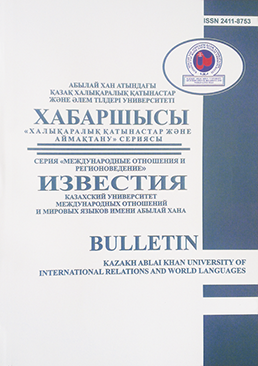CURRENT TRENDS IN THE KAZAKH DIASPORA
DOI:
https://doi.org/10.48371/ISMO.2021.45.3.005Keywords:
Kazakh diaspora, ethnic identity, migration, homelandAbstract
The Kazakh diaspora around the world has about 5 million people. Most of them live in the Xinjiang Uygur Autonomous Region (XUAR) of the People's Republic of China (PRC) bordering with Kazakhstan. Today, Kazakhs living in China are represented by two groups. One of them is the Kazakh clans that migrated from the Soviet Union during the years of collectivization, the other, the most numerous, are those whose ancestors originally lived in this territory. Now the main problem of the Kazakh diaspora is the preservation of the ethnic identity of Alysta zhurgen agayyndarga ak tilek Abstract. The Kazakh diaspora around the world has about 5 million people. Most of them live in the Xinjiang-Uygur Autonomous Region (XUAR) of the People's Republic of China (PRC) bordering with Kazakhstan. Today, Kazakhs living in China are represented by two groups. One of them is the Kazakh clans that migrated from the Soviet Union during the years of collectivization, the other, the most numerous, are those whose ancestors originally lived in this territory. Today, the main problem of the Kazakh diaspora is the preservation of ethnic identity.
The largest diasporas of Kazakhs also live in Russia and Uzbekistan. In this regard, it is important, in our opinion, to study the problems of ethnic identity, since it is a kind of sign or marker. It indicates that a person belongs to a certain ethnic group, whose members are endowed with a common self-consciousness. Ethnic identity is especially clearly actualized when an individual (or a group) lives in a non-ethnic environment, in which case it begins to play a protective role.







